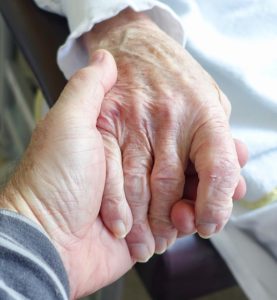Training for dementia-friendly communication
Many long-term care organizations struggle with staff training, especially in dementia care. Too often, staff don’t retain what they’re taught, or don’t understand why techniques are being implemented. Shift workers may struggle to find opportunities to do in-person training courses, opting instead for online formats that often have lower information retention rates. Well-intentioned staffers may be highly motivated during training sessions, but fail to apply what they’ve learned to their own residents.
What if staff training could be done in a completely different way? Improving dementia care training a panel of dementia care providers told attendees at this week's LeadingAge Annual Conference in Indianapolis, Indiana.
At Abe’s Garden, a 42-bed memory care-only community in Nashville, everyone on the staff takes the same dementia care training, shares feedback and helps to train others. The training-the-trainer strategy crosses departments, and direct-care staff are often trained by a peer. Training modules focus on the primary activities and needs: Dining, personal hygiene, communication and behaviors. All materials are highly visual and focus on teamwork and creativity.
The approach, based on the I’m Still Here concept envisioned by John Zeisel, PhD, stresses the interconnectedness of all staff members, empowering each person to become a dementia specialist. “We don’t ‘train’ staff. We become partners with those we train,” says Zeisel, who is President of Hearthstone Alzheimer Care and author of the book I’m Still Here. “We need to give those who deliver the hands-on care the control to figure out what works and what doesn’t, then share it with others.”
At Abe’s Garden, which opened in 2015, the group effort approach has improved outcomes, since everyone is sharing strategies individualized for each resident. Chris Coehlo, Continuous Quality Improvement Director at Abe’s Garden, conducts weekly observations of the staff’s interactions with residents, meets with staff to collect feedback and circulates weekly evaluations on how to improve.
For example, simply changing the way staffers communicate with residents can increase engagement in activities. The best communication with residents who have dementia uses more than the spoken words themselves, Zeisel says. Instead of asking a resident for his choice of a lunch meal, show both choices on the plates as you ask the question. Instead of buttering the toast for him, demonstrate the task in front of him and then ask him to continue. Above all, train your staff not to make the classic mistake of assumption: Just because a resident chose chocolate cake for dessert on Tuesday doesn’t mean she will want that item every day. “The dining experience is primarily not about nutrition,” Zeisel says. “It’s about social interaction and about how people feel.”
When Abe’s Garden first began the training program, they noticed many staffers saying, “Do you want to…?” when presenting choices to residents. “That provides the opportunity for them to say no,” Coehlo remembers. “Give them a reason to choose an engagement. Try ‘Your friends are waiting for you at…’ or ‘would you like to join A or B?’”
By fostering an environment where staffers learn every day and can contribute to the feedback, training becomes an integral part of care delivery. “Meaningful engagement is the goal of all communication, and that’s not always language-based,” Zeisel says. “You can train direct care staff to be leaders in engagement.”

Pamela Tabar was editor-in-chief of I Advance Senior Care from 2013-2018. She has worked as a writer and editor for healthcare business media since 1998, including as News Editor of Healthcare Informatics. She has a master’s degree in journalism from Kent State University and a master’s degree in English from the University of York, England.
Related Articles
Topics: Alzheimer's/Dementia , Articles , Training











